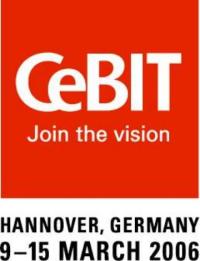
13.03.2006 - 17:09 Uhr, Ericsson GmbH
Düsseldorf (ots) -
Ericsson (NASDAQ:ERICY) and Acea, the second largest electricity
distributor in Italy, have signed a 10 year managed service agreement
to manage and develop Acea's system for Automatic Meter Reading
(AMR). The system will be deployed in Rome to 1.5 million households.
Ericsson is entering a new market of the developing utility area
and the contract is the first of its kind signed by Ericsson. This is
a result of mobilizing business processes to protect revenues and
reduce cost with mobile technology.
The liberalization of the utility market and the introduction of
new regulatory requirements from governmental authorities have opened
up a world wide market where millions of power meters need to be
managed. Sweden and Italy are the first two countries to adapt to
these regulations and other EU countries are likely to follow.
Ericsson, with its key capabilities in managed services and mobile
machine-to-machine communication, will address this market.
Massimiliano Salvi, President of Acea Distribuzione SpA says:
"Ericsson is the best choice for Acea to have a strong and committed
local and global partner with an excellent combination of
competencies in managed services, mobile network and system
integration assuring the solution evolution."
Urban Gillström, President of Ericsson Enterprise, says: "We are
proud that we are chosen to manage this new and innovative solution,
and that we, together with Acea, will develop it even further. We are
now expanding into the very interesting utility market which we see
as an important area.
"For Ericsson this agreement is a result of our focus on the
enterprise segment, giving us the opportunity to further invest in
the potential of this business area - both as end-to-end solution
providers and managed services business partner for enterprises."
The benefits for utility companies deploying the Ericsson services
are lower OPEX in customer management and network maintenance, as
well as protected revenues by more accurate billing and early
detection of "power fraud."
Acea customers will enjoy invoicing based on actual consumption
levels, possibility to benefit from different tariffs with savings on
bills and less and shorter power breaks due to the immediate
notification to Acea network operations center of faults in the low
voltage network.
Households will be linked via the electrical power lines to
concentrators which in turn will be linked via GPRS modules to the
service center managed by Ericsson, where data integration will be
done to Acea's business systems for billing, network management and
customer care.
Ericsson will manage Acea's AMR system, utilizing its large
existing Italian services organization for delivery and operation of
managed services for operators and enterprises.
Ericsson is shaping the future of Mobile and Broadband Internet
communications through its continuous technology leadership.
Providing innovative solutions in more than 140 countries, Ericsson
is helping to create the most powerful communication companies in the
world.
new BROADBAND over POWERLINES 200 Mbps BPL Technology


























